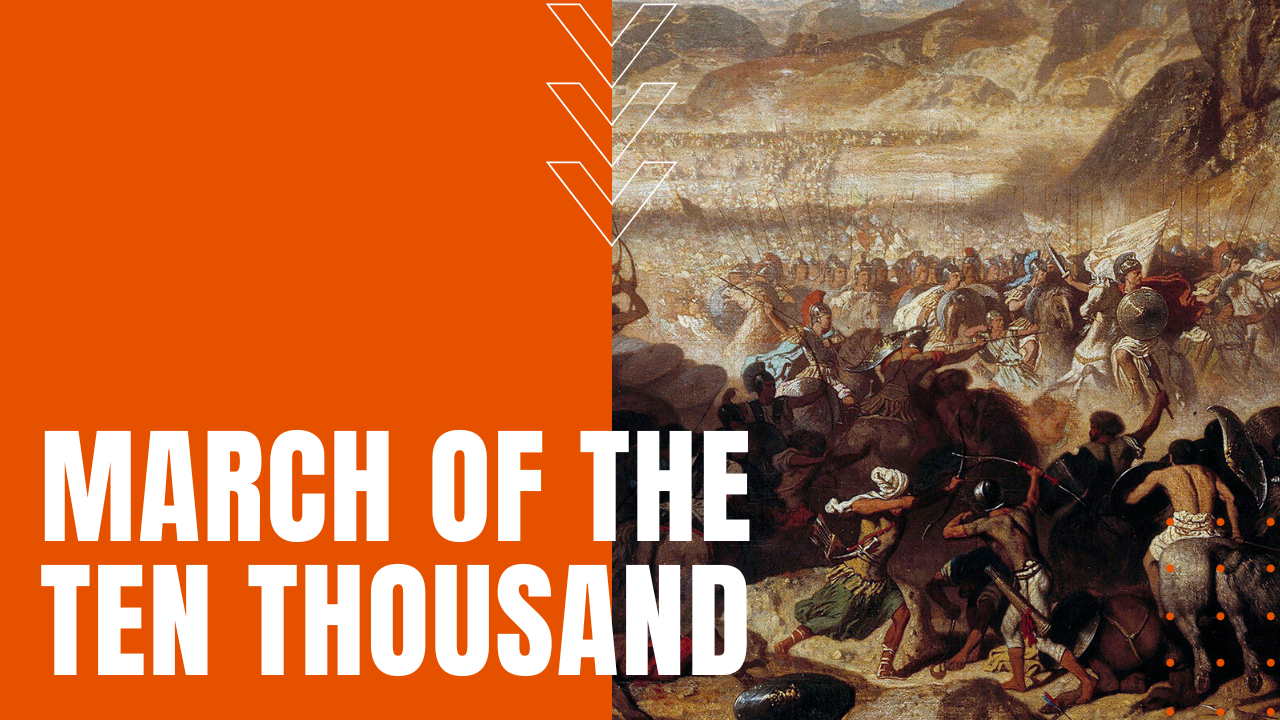March of the Ten Thousand

Following the death of Persian King Darius II in 404 BC, a power struggle developed between the dead king’s sons, Artaxerxes and Cyrus, and after Artaxerxes was named king of Persia, in 401 BC, Cyrus hired 10,000 Greek mercenaries to join forces with his 20,000-man army for a planned military takeover of the Persian Empire.
Thinly-Veiled False Objective
Concealing his true intentions from the hoplites with the false objective of driving hostile tribes from the Taurus Mountains, when King Artaxerxes got wind of his brother’s approach, he attacked the opposing army at the Battle of Cunaxa, north of the Persian capital, and when Cyrus was killed in battle, the now unemployed Greek warriors began their perilous 1,700-mile retreat toward their homeland.
Executes War Leaders
As recorded in the Anabasis by Xenophon, after Artaxerxes beheaded most of the Greek’s generals and captains, the surviving hoplites chose Xenophon as their leader, at first fighting off attacks by Persian archers and cavalrymen who struck their rear guard, employing deceptive night tactics and feints to overcome their enemy, at the same time battling deep snow and biting cold that claimed the lives of pack animals and hoplites alike.
Multiple Attacks
Reaching the northern Zagros Mountains in present-day Turkey, the Greeks faced their second challenge from the Carduchian tribe, who launched repeated attacks on the hoplites from high ground positions and other natural chokepoints. Forging on to the Armenian Highlands, the Greeks found themselves shadowed by Carduchian and Armenian troops atop opposing high ground positions, forcing Xenophon to set up a rear guard feint, which ultimately forced both opposing armies into full retreat.
Brutal Trek Home
The remaining trek home would further test the mettle of every surviving warrior, marching across frigid mountainous terrain as men and animals succumbed to starvation and frostbite, all the while imploring local guides to point the way home. Reaching their final mountain pass before returning to Greece, the Ten Thousand faced yet another opposing force of Taochian and Chalybes tribesmen, scattering the enemy in a swift and disciplined night action that allowed the Greeks to seize high ground advantage, before returning home with more than 80% of their original numbers.
A Miraculous Survival
Xenophon’s account of their miraculous retreat would prove vital to Alexander the Great’s 4th century war against Persia, while Xenophon’s detailed account of military decision-making and feint tactics are still studied to this day, making the March of the Ten Thousand, one of the most epic tales of survival from ancient Greek history.
